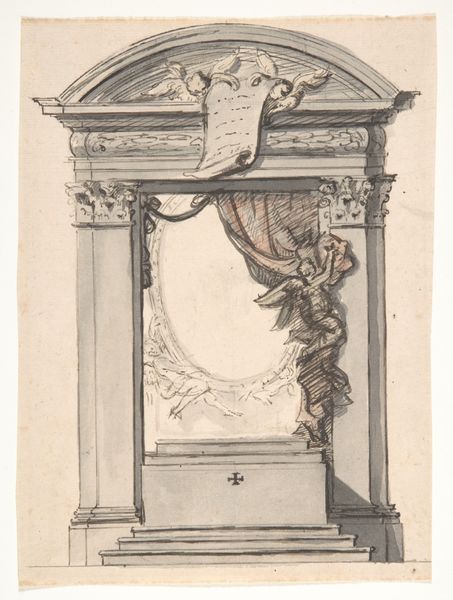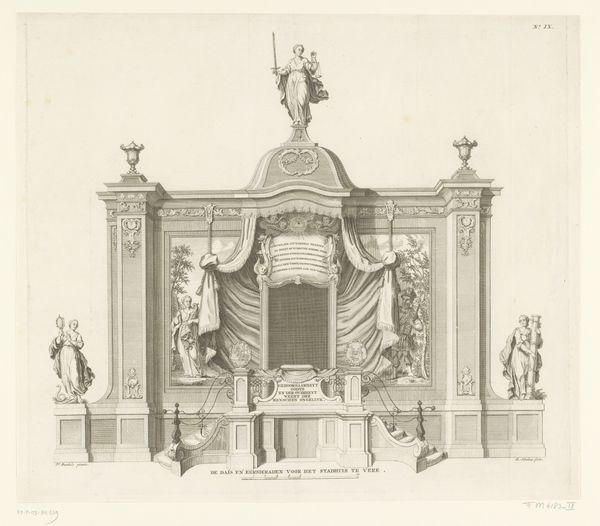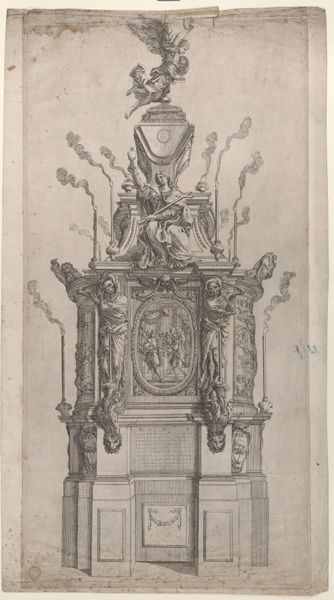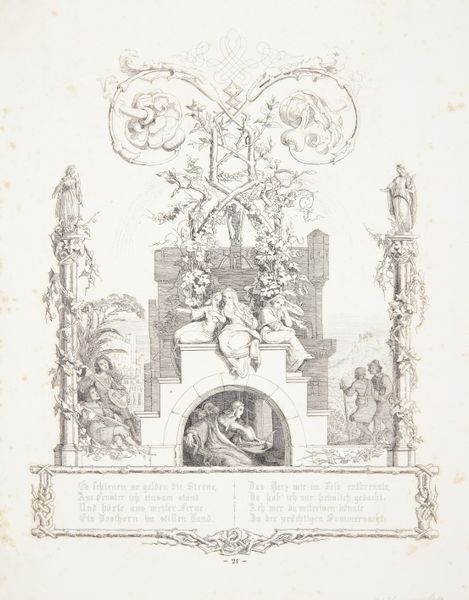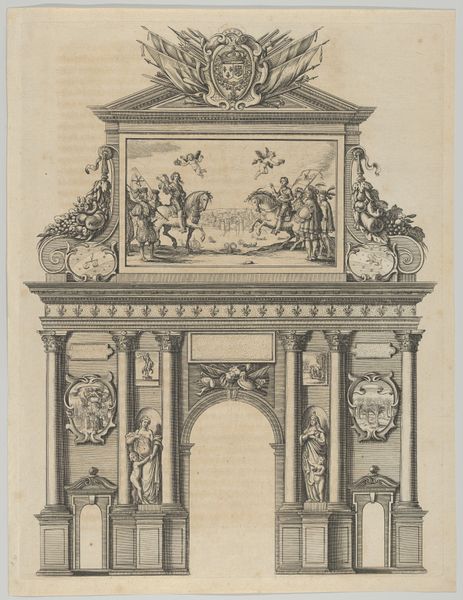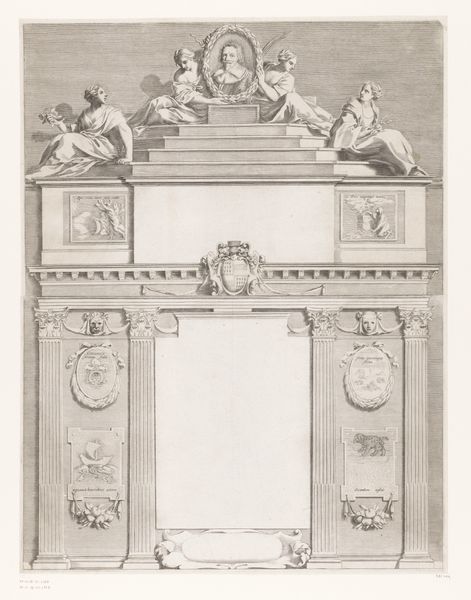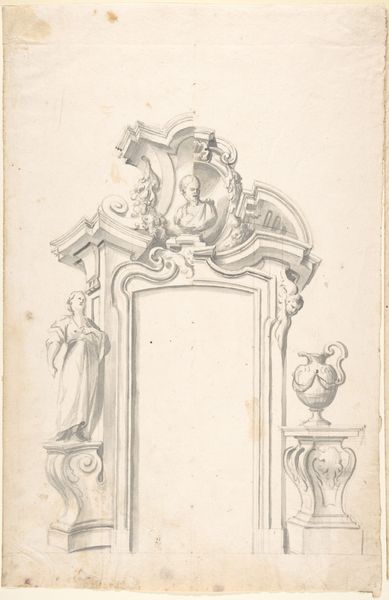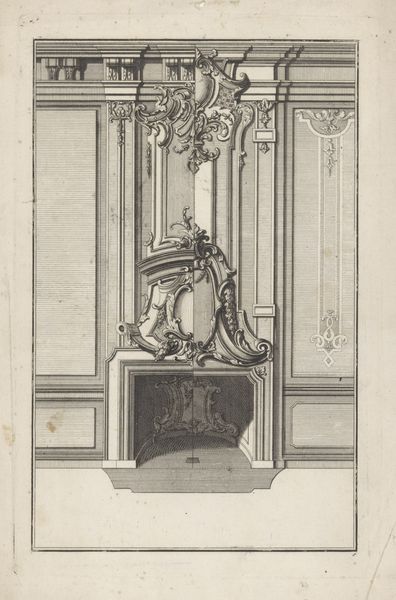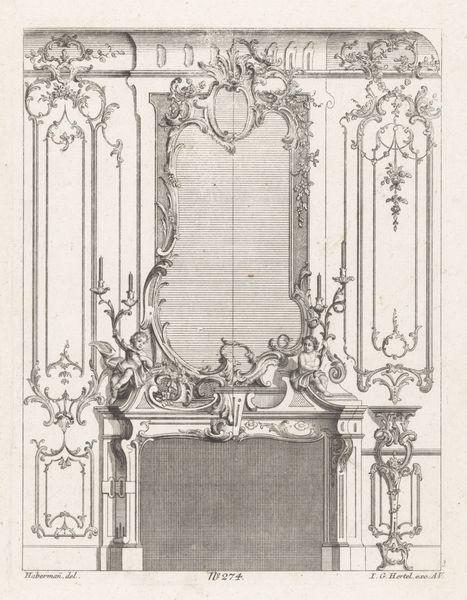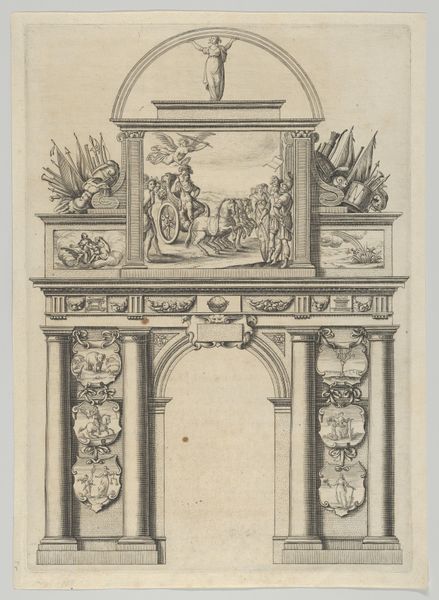
drawing, print, engraving
#
drawing
#
allegory
#
baroque
# print
#
history-painting
#
decorative-art
#
engraving
Dimensions: Plate: 12 1/4 × 9 1/8 in. (31.1 × 23.2 cm) Sheet: 16 1/4 × 11 1/4 in. (41.3 × 28.5 cm) [irregular edges]
Copyright: Public Domain
Curator: This intricate engraving is the title page to "Nouveau Livre de Vases," created in 1716 by Jean Bernard Toro. The composition features an elaborate architectural monument draped with fabric and adorned with figures. What strikes you first about it? Editor: The theatricality! The cascading drapery, the winged figures—it feels like a stage set designed to convey authority and power. Given the baroque style, I am curious how vases become the protagonists of a historical narrative. Curator: Well, consider that Toro designed for the royal cabinetmaker. This print serves as a record of skills, and simultaneously advertises those skills. The Baroque thrives on spectacle and on overwhelming the viewer with the craftsmanship of the elite labor and exclusive consumption, and that is evident here. Editor: Absolutely, we're seeing not just vases, but also representations of aristocratic patronage and consumption, aren't we? Look at the imagery chosen to surround the text and vase on the lower register—I can see references to ancient cultures that were often co-opted to legitimize authority. How do you read those elements, framing a 'new' book? Curator: This 'new book' aims to recontextualize these vessels for the Bourbon court; they are, in a way, ennobled through skillful and exclusive labor that elevates simple materiality. It’s no mere accident this exists as a print too—it must circulate among potential patrons. Editor: It brings up an important point about the accessibility and reception of such objects in the 18th century. While presented as 'new,' its references are deliberately steeped in the classical tradition, acting almost like a genealogy made material. And creating reproducible versions expands consumption for some and reinforces exclusivity for the ruling class. Curator: That intersection between artistic skill, political aspiration, and dissemination, facilitated by the medium itself, offers a rich commentary on the societal dynamics of the era. Editor: Indeed. Reflecting on this image makes me want to look deeper into how artistic movements get appropriated and repackaged, as cultural messages shift. Curator: I’m left considering how artists like Toro negotiated the complexities of patronage and production. The Baroque was more than just a visual style—it was an elaborate social project, materialized in designs for even everyday items.
Comments
No comments
Be the first to comment and join the conversation on the ultimate creative platform.
